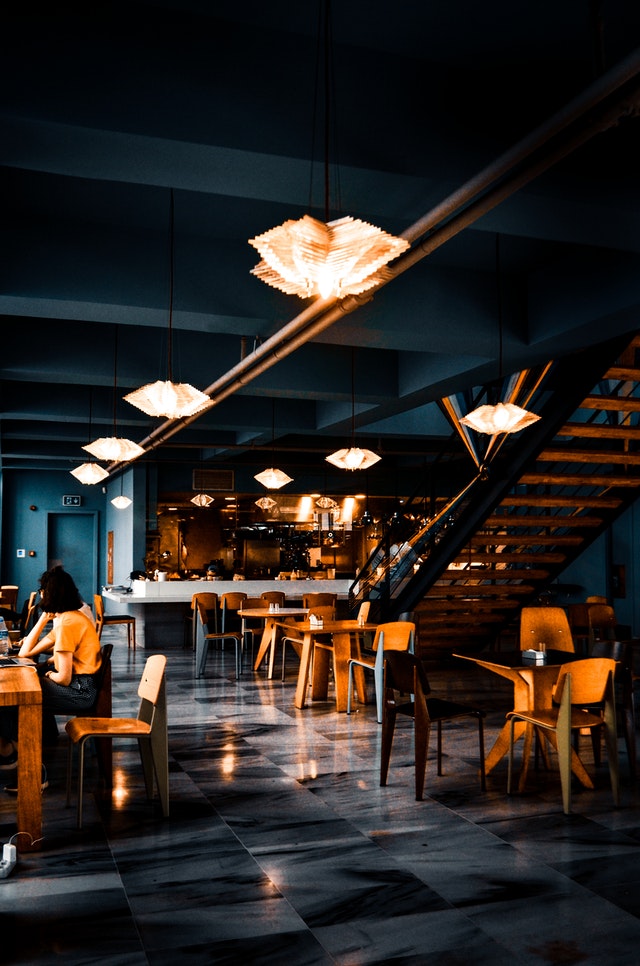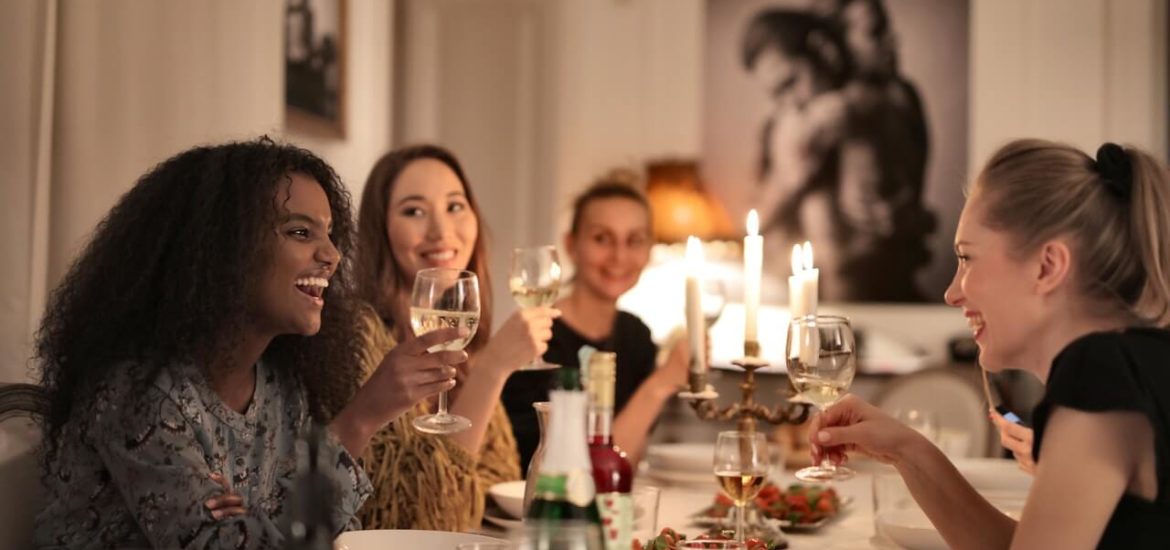Restaurant design psychology has not always been considered an important part of the business. However, it is now one of the most popular topics in restaurant management. This is because restaurant interior design can have a profound impact on customer experience and ultimately how much they will spend while dining with your establishment.
People eat out for a variety of reasons. Some are looking for good conversation, some are seeking the best food that the place has to offer or perhaps they are just after a little peace and quiet. However, one thing is clear, people will not be back again if they do not have an enjoyable experience. This means that the trick to good restaurant design psychology is making sure you get it just right.
To be specific, the interior design does more than just look good as it influences what people feel when they are inside. The function that this space serves also dictates whether it should be designed to attract or deter customers depending on its purpose (e.g., fast-food chain vs. fine dining).
If you want to know more about how restaurant interior design psychology could be used to enhance your own business, we invite you to read further as we’ll cover this topic in today’s article.
How Important Is The Psychology Of Scents As Part Of The Interior Aspects Of A Restaurant?
Scent is a very influential and powerful sense, especially when attracting diners into your establishment. That’s because smells can guide us to memories, events and places. When we walk into a restaurant, we should experience the smells that go with the type of cuisine we are dining at. All restaurants should be designed to work with all five senses- taste, touch, sight, hearing, and smell. This will give guests the best possible experience and make them want to come back for more.
The psychological impact of scents as part of the interior aspects of a restaurant is important because it helps draw the guest in and makes them feel like they are getting an experience which makes them want to return and try other dishes on the menu. The more the guests enjoy themselves the more likely they are to return and spend money, which translates into more revenues for your food business.
The power of scents can be used as a marketing tool. If the smell of vanilla reminds you of baking cookies and makes you feel happy, it can make guests feel good after they leave your restaurant. This is why it needs to be carefully considered when planning an interior space because it can have a significant effect on how much guests enjoy themselves and therefore how much they are likely to return.
Ambiance

The ambiance of your food establishment is one of the most crucial aspects of restaurant design. When diners walk into your establishment, they should feel comfortable and excited to dine with you. This can be accomplished by using color schemes and other interior aspects such as lighting to create a mood for the type of cuisine being served. Diners might be drawn in by the smell of food that smells like what they’re craving or a cheerful atmosphere that reflects their personality. Also, people can feel welcomed and appreciated if there’s a nice welcome sign at the front entrance and an attentive staff member who greets them at their table.
Having a good restaurant interior design can be the most important element in keeping customers and increasing sales. That is why the ambiance of your establishment should be consistent with the type of cuisine that is served and this can be achieved by having matching colors, lighting and other visual elements such as artwork. Diners will appreciate it if their dining experience reflects what they’re craving and if the ambiance matches their personality. The restaurant’s interior design should be inviting, comfortable and exciting so that diners feel desired rather than ignored or neglected.
Furthermore, the color scheme used in restaurants helps create a mood for different types of cuisine that are being served. Warm colors such as red, orange and yellow give people a feeling of being hungry while cool colors such as blue, green and purple help people feel relaxed and more comfortable.
In addition, the color of the walls and furniture in a restaurant help to influence how customers view your establishment and may determine whether they come back for more. A warm color scheme can make people feel relaxed while cool colors such as blue, green and purple make people feel more comfortable. Dining rooms should be designed according to the type of cuisine that is offered to create an ambiance that matches the food. For example, if a restaurant has a seafood menu, then it should have a nautical theme and a beach-y feel.
There are also other dining room decor ideas to consider when designing your restaurant’s interior space. You can include artwork that reflects the cuisine or simply arty pieces which match the ambiance of your establishment. The lighting should reflect the ambiance of the restaurant and can be dimmed to suit different times of the day. And at the same time, the lights should not show through your menu cover because it could make guests feel rushed when they’re trying to order, instead they should be dimmed for the atmosphere.
You can design hanging lamps in a way that’s suitable for a particular type of cuisine or you may consider using the appropriate color of lighting such as blue for spas and green for sushi bars.
Restaurant Background Music
The music you play in your restaurant can help create a mood for the type of cuisine that is being served. For example, if you’re playing upbeat tunes then it creates a feeling of excitement and hunger which will make people want to come in and eat. Soft music is often more suitable for a restaurant with a romantic atmosphere or one where people are looking to relax after a long day at work. You’ll need to gauge the tone of your establishment and match it with the right type of music that will encourage diners to feel comfortable and enjoy themselves.
Different types of music also have different psychological effects on people such as classical music making them drowsy and waltz inducing feelings of romance. To find out more about how specific types of music affect diners, why not conduct a market research survey in your restaurant? You could also think about asking friends and family what type of mood they associate with different genres so your restaurant can appeal to various groups of people.
Moreover, the music in your restaurant’s interior design should also be chosen according to the time of day. People are more likely to want to dance or relax when dining out during evenings and weekends, while you may prefer quiet conversations during lunchtimes. The music being played will determine whether your customers want to have dinner with friends or are just looking for a place where they can relax.
Sit down restaurants often use music to create an atmosphere which matches the cuisine and the desired feeling of their target market while fast-food chains tend to play more upbeat tunes during busy periods such as lunchtime and mornings. If you own a bar or nightclub then you’ll need to play appropriate music for your customers at different times throughout the day.
The Other Side Of The Restaurant Interior Design: Operations
The operations of your restaurant are just as important as the interior. What about the level of customer service, the ambiance of the establishment, the food quality? These are all big factors in how your customers experience coming to eat at your establishment.
It is important that your establishment be clean, comfortable and welcoming for your patrons. You should have plenty of seating so that people can come in with friends or family without feeling cramped. Make sure that you have high-quality food at a reasonable price to appeal to all of your diners.
It is also important that you provide customer service that exceeds their expectations of what they may get from a restaurant of this caliber. This will ensure that they come back for more after their experience with you. You can also win people over by hosting special events or having unique menu choices that will set your restaurant business apart from the others.
During busy times, it is important to staff up so that there are enough employees to handle all of your patrons without making them wait too long or be ignored. This will provide an overall better experience for them which will encourage them to come back in the future.
Conclusion
Restaurant interior design psychology is a science unto itself. As we’ll describe in this blog post, there are many different factors that come into play when it comes to the experience of dining out and you need to be aware of them all: from choosing appropriate music for your customers at different times throughout the day to providing excellent customer service so they feel valued by your establishment.
The success of your restaurant can depend on how well you’re able to orchestrate these aspects together as one cohesive unit- which means investing time and effort into researching what will work best for your business. This includes everything from scents (such as essential oils) or ambiance (like mood lighting), right down to what type of food quality you offer; every detail counts and can contribute to how your customers experience and feel when they come and eat at your restaurant.
The success of your restaurant can depend on how well you’re able to orchestrate all of these different areas so that they work together harmoniously. This is what keeps people coming back again and again for more great food and service!
Check out Decodence Design’s interior design services if you need professional help in designing with your restaurant. Visit their website today.

